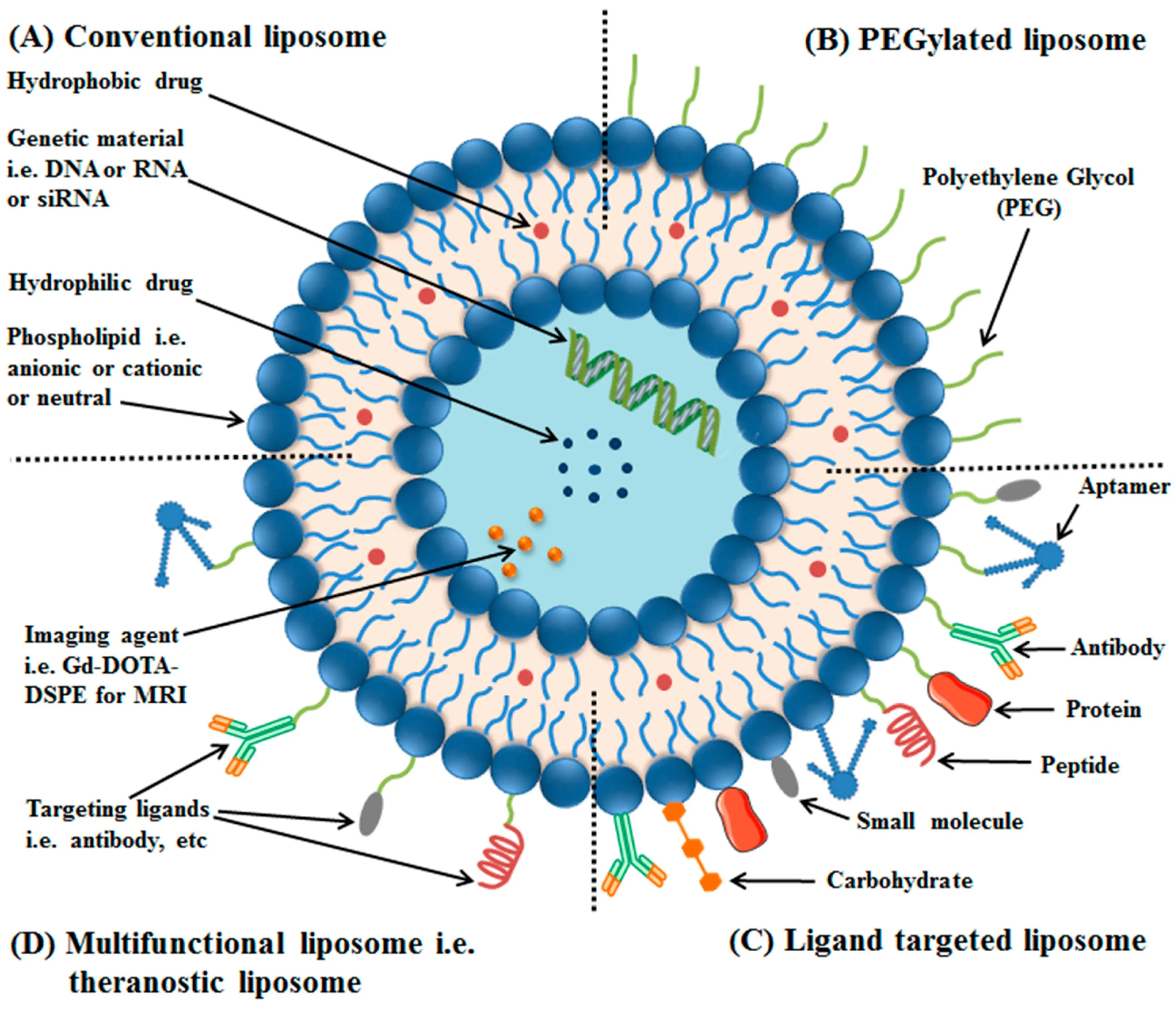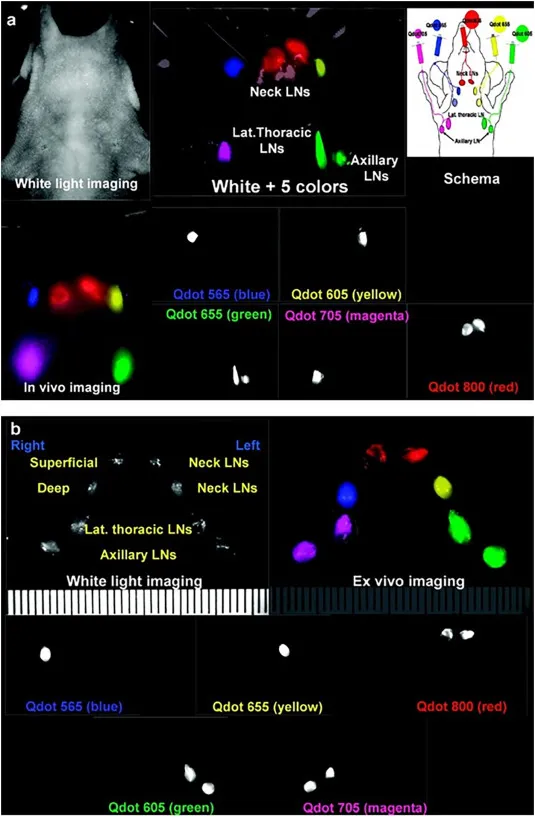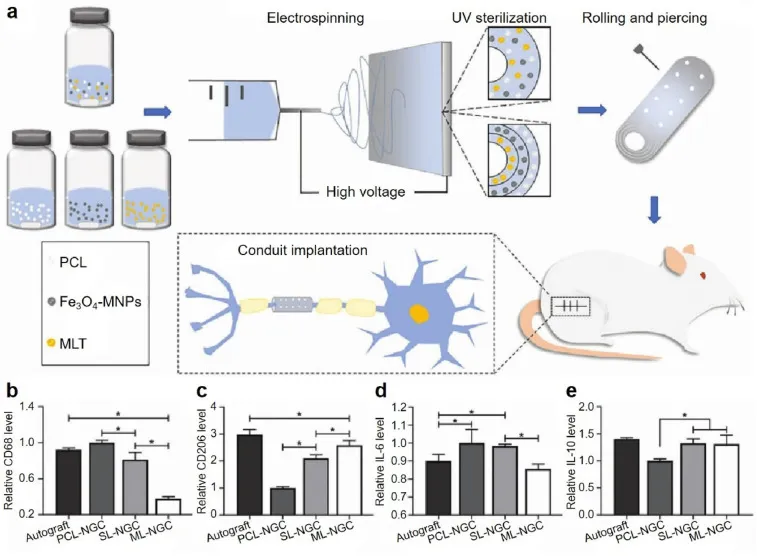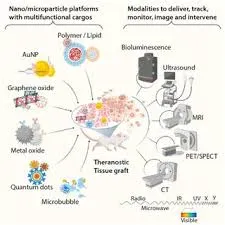Biomedical Applications of Functionalized Nanomaterials
The integration of nanotechnology into biomedical sciences has ushered in a new era of diagnostic and therapeutic strategies. Functionalized nanomaterials, engineered with specific surface properties and functionalities, are at the forefront of this revolution. These materials, typically ranging from 1 to 100 nanometers in size, are designed to interact with biological systems at the molecular level, offering unprecedented precision and efficiency.
1. Targeted Drug Delivery Systems
One of the most promising applications of functionalized nanomaterials is in the field of targeted drug delivery. Conventional chemotherapy often suffers from non-specific distribution, leading to severe side effects and suboptimal therapeutic outcomes. Functionalized nanoparticles, such as liposomes, dendrimers, and polymeric nanoparticles, can be engineered to carry therapeutic agents directly to diseased cells.

By attaching targeting ligands (e.g., antibodies, peptides) to their surface, these nanocarriers can recognize and bind to specific receptors overexpressed on cancer cells. This active targeting approach enhances drug accumulation at the tumor site while minimizing off-target effects. Furthermore, stimuli-responsive nanomaterials can release their payload in response to specific triggers like pH changes, enzyme activity, or temperature gradients within the tumor microenvironment.
| Nanocarrier Type | Core Material | Common Functionalization | Primary Application |
|---|---|---|---|
| Liposomes | Phospholipids | PEGylation, Antibodies | Cancer therapy, Gene delivery |
| Polymeric Nanoparticles | PLGA, Chitosan | Peptides, Folate | Controlled release, Targeted therapy |
| Dendrimers | PAMAM | Carboxyl groups, Targeting moieties | Drug and gene delivery |
| Gold Nanoparticles | Gold | Thiols, Antibodies | Photothermal therapy, Diagnostics |
2. Advanced Diagnostic and Imaging Techniques
Functionalized nanomaterials have significantly advanced the field of medical diagnostics by enabling highly sensitive and specific detection of biomarkers. Quantum dots (QDs), gold nanoparticles, and magnetic nanoparticles are commonly used as contrast agents or probes in various imaging modalities.

2.1. Biosensing and Bioimaging
Surface functionalization allows these nanoparticles to bind specifically to target molecules, such as proteins, nucleic acids, or cancer biomarkers. For instance, antibody-conjugated magnetic nanoparticles can be used in magnetic resonance imaging (MRI) to enhance contrast and improve the detection of tumors or inflammatory sites. Similarly, functionalized quantum dots offer superior brightness and photostability compared to traditional organic dyes, making them ideal for long-term cellular imaging and tracking.
2.2. Point-of-Care Diagnostics
Nanomaterial-based biosensors, such as those utilizing functionalized gold nanoparticles in lateral flow assays (like home pregnancy tests), provide rapid, low-cost, and user-friendly diagnostic solutions. The high surface-to-volume ratio of nanomaterials allows for the immobilization of numerous recognition elements, greatly enhancing the sensitivity and detection limits of these devices.
3. Regenerative Medicine and Tissue Engineering
In regenerative medicine, functionalized nanomaterials are used to create biomimetic scaffolds that promote tissue repair and regeneration. Nanofibrous scaffolds, often made from electrospun polymers, can be functionalized with bioactive molecules like growth factors, adhesion peptides, or cytokines to guide cell behavior.

These functionalized scaffolds not only provide structural support but also actively direct cellular processes such as adhesion, proliferation, and differentiation. For example, neural tissue engineering benefits from scaffolds functionalized with peptides that mimic the natural extracellular matrix, encouraging neurite outgrowth and nerve regeneration.
4. Theranostics: Combining Therapy and Diagnosis
Theranostics represents a paradigm shift in personalized medicine, where functionalized nanomaterials serve dual purposes: diagnosis and therapy. A single multifunctional nanoparticle can be designed to carry both imaging agents and therapeutic drugs, allowing clinicians to monitor drug delivery in real-time and adjust treatment regimens accordingly.

This approach is particularly valuable in oncology, where it enables the visualization of tumor targeting and the assessment of therapeutic efficacy. For instance, iron oxide nanoparticles functionalized with anticancer drugs and fluorescent dyes can be tracked via MRI while simultaneously delivering their cytotoxic payload to cancer cells.
5. Challenges and Future Perspectives
Despite the tremendous potential, the clinical translation of functionalized nanomaterials faces several challenges. These include concerns about long-term toxicity, biocompatibility, immune responses, and the scalability of manufacturing processes. Rigorous preclinical and clinical studies are essential to ensure the safety and efficacy of these novel materials.
Future research will likely focus on developing smarter, multifunctional nanomaterials with enhanced targeting capabilities and reduced side effects. The integration of artificial intelligence in nanomaterial design and the exploration of biodegradable nanomaterials are promising directions that could address current limitations and unlock new biomedical applications.

